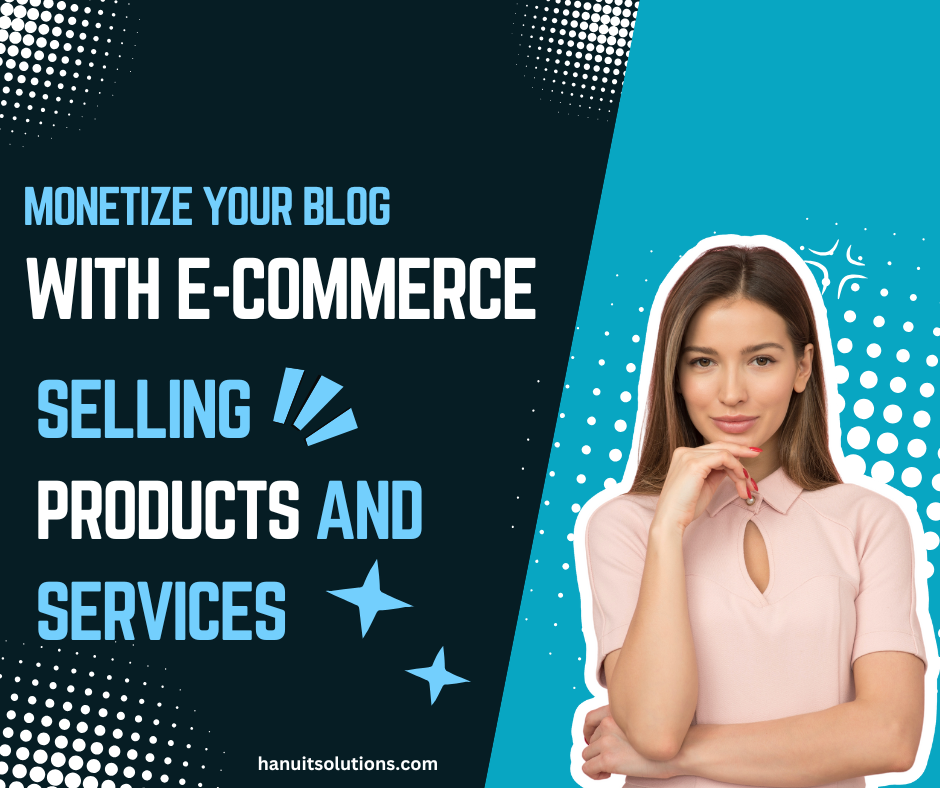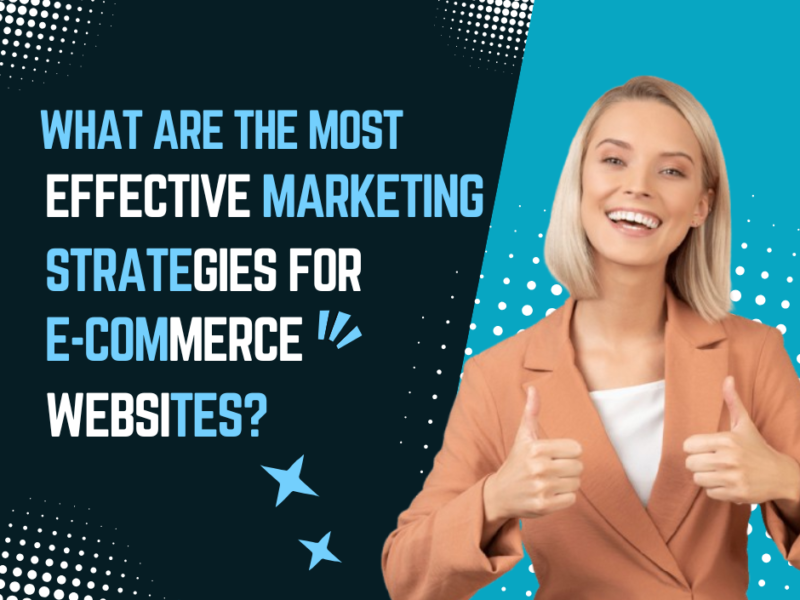Monetize Your Blog with E-Commerce: Selling Products and Services
Blogging has become one of the most popular ways for individuals and businesses to share knowledge, connect with audiences, and express creativity. However, turning a blog into a steady source of income can be challenging. For many bloggers, the solution lies in e-commerce. By selling products and services directly through your blog, you can use your established audience and turn your platform into a profitable venture. Here’s how to effectively monetize your blog with e-commerce, including strategies, tips, and the best practices to get started.
1. Why Monetize Your Blog with E-Commerce?
When you monetize your blog with e-commerce, you open up multiple revenue streams, offering readers content and valuable products or services related to your niche. Unlike ad revenue or affiliate marketing, e-commerce lets you control what you sell, who you sell it to, and how you promote it. This form of income can also be more reliable since it’s based on a direct exchange of value between you and your readers.

2. Choosing the Right Products or Services to Sell
The first step is deciding what to sell. Your product or service should align with your blog’s niche and resonate with your audience. Here are some ideas based on popular blog types:
Fashion or Lifestyle Blog: Consider selling custom merchandise, like T-shirts or mugs, or partnering with local artisans to offer unique products.
Health or Wellness Blog: You could create and sell digital guides, workout plans, wellness journals, or even online consultations.
Tech Blog: Offer downloadable tech guides, courses, or affiliate hardware products.
Food Blog: Sell recipe books, cooking classes, or kitchen tools.
Remember, it’s all about what would add value to your readers’ lives while staying true to the blog’s identity.
3. Setting Up an Online Store on Your Blog
With your product idea in hand, the next step is to set up an online store. Here’s how to do it:
Choose an E-Commerce Platform: WordPress has plugins like WooCommerce, which is perfect for bloggers. If you’re on another platform, options like Shopify or BigCommerce offer robust integrations with various blogging platforms.
Design an Easy-to-Navigate Store: Make it simple for readers to browse your products and find the information they need. Include high-quality images, clear descriptions, and concise details about each product’s benefits.
Focus on User Experience: From product search to checkout, ensure a seamless shopping experience. A good user experience means less friction in the buying process, resulting in higher conversions.
4. Creating Product Listings that Convert
Crafting an enticing product listing is crucial for attracting customers. Your listing should communicate both the features and the benefits of your product. Here’s how:
Catchy Titles and Descriptions: Use engaging language and highlight what makes your product unique. Let readers know why this product is worth their money.
Add High-Quality Photos: Visual appeal is key. Use bright, clear images that show the product from different angles and even in use.
Showcase Reviews and Testimonials: If you have positive feedback from past buyers, share it! Testimonials help build trust and credibility, which is crucial for converting readers into buyers.
5. Selling Digital Products on Your Blog
Digital products are a fantastic way to monetize your blog with minimal overhead. Digital goods like e-books, courses, templates, and downloadable guides can be made once and sold infinitely, making them a highly scalable option. Here’s why they work well:
Instant Delivery: Customers can access the product immediately after purchase, enhancing satisfaction and convenience.
Low Maintenance: There’s no need to manage physical inventory or shipping logistics.
When selling digital products, protect your work with secure downloads, watermarking (if appropriate), and clear copyright notices.
Also read: How to Create and Sell Online Courses Through Your Blog
6. Promoting Your Products Through Content
Promoting your products through blog content is a subtle yet effective way to increase visibility and sales. Here’s how to weave product promotion naturally into your blog:
Create Product-Focused Blog Posts: Write posts that highlight your product’s benefits, explain its uses, or share customer testimonials. For example, if you’re selling an e-book, write a post introducing the topic and include a call to action for the book.
Add Calls-to-Action (CTAs) in Relevant Posts: Not every post needs to be about the product, but you can add a CTA in related content. For instance, a food blog could end a recipe post with a CTA for their recipe book.
Leverage Email Marketing: Use email newsletters to announce new products, share exclusive discounts, or promote limited-time offers. Email marketing remains one of the most effective channels for e-commerce, especially for engaging existing readers.
7. Use Social Media to Boost Sales
Social media can amplify your reach beyond your blog audience and drive more traffic to your store. Here’s how to leverage social media effectively:
Share Behind-the-Scenes Content: Show the process behind creating your products. This builds interest and lets your audience feel connected to your work.
Run Giveaways or Contests: Offering a free product in exchange for followers or shares can significantly increase brand awareness.
Collaborate with Influencers in Your Niche: Partnering with influencers lets you tap into their audience, creating more exposure for your products.
8. Offer Exceptional Customer Service
The goal isn’t just to make a one-time sale but to build a community of loyal customers who trust you. Excellent customer service builds this loyalty. Here are some tips:
Quick Response Time: Respond to customer inquiries promptly, whether it’s via email, social media, or your blog’s contact form.
Offer Easy Returns or Guarantees: A fair return policy makes people feel more comfortable buying from you, especially if you’re selling physical goods.
Collect Feedback and Continuously Improve: Reach out for feedback to understand your customers’ needs and preferences. Use this information to refine your offerings and improve the customer experience.
FAQ
How can I decide which products to sell on my blog?
Start by considering your blog’s niche and your audience’s interests. Look at successful blogs in your category for inspiration, conduct surveys, or analyze which posts are the most popular to find topics your audience cares about.
Can I sell digital products if my blog is small?
Absolutely! Even with a smaller audience, you can sell digital products. Digital products like e-books or guides are cost-effective to produce and easy to market to readers who already trust your expertise.
Which e-commerce platform should I use for my blog?
If you’re on WordPress, WooCommerce is a powerful, free option that integrates smoothly with your site. If you use other platforms, Shopify or BigCommerce are excellent choices with easy setup and customization options.
How do I attract more visitors to my blog’s online store?
Content marketing, social media promotion, and SEO are key. Use engaging blog posts to promote products, leverage your email list, and create shareable social media content. Collaborations with influencers in your niche can also drive more traffic.
Is it better to sell physical products or digital products?
Both have advantages. Digital products offer scalability and low overhead, while physical products might provide a more unique, tactile experience. Choosing one depends on your audience’s preferences, your budget, and your product ideas.
How do I handle customer service for my e-commerce store?
Create an FAQ page to address common questions, respond quickly to customer inquiries, and offer fair return or refund policies. Excellent customer service encourages repeat purchases and builds a positive reputation for your brand.
Conclusion
Monetizing your blog with e-commerce offers a powerful way to turn your passion into a sustainable source of income. By selling products or services that resonate with your audience, you add value to your blog while creating multiple income streams. From choosing the right products and setting up an online store to promoting them through your content and social media, each step helps build a loyal customer base that supports your brand. Whether you’re selling digital downloads, physical items, or online courses, e-commerce allows you to control your revenue while deepening your connection with readers. With strategic planning and a commitment to customer satisfaction, transforming your blog into a profitable e-commerce platform is entirely achievable, paving the way for long-term success.








